Hello! I am an autistic college student doing a project on representations of autism in various American media. This blog is going to be where I put stuff I’ve written and interact with other things that have to do with what I’m focusing on. I welcome (and encourage) interaction because I think academia should be an inclusive and community effort. The most common tags I use in this blog are "shows: atypical," "shows: the good doctor," "movies: fly away," "movies: please stand by," "my comments," and "my writing." You can search for any of these tags on the blog and find what work I've done with them.
Don't wanna be here? Send us removal request.
Text
My (Current) Takeaways
After reviewing everything I’ve studied for this project, I’ve noticed some striking (and sometimes concerning) similarities in American media portrayals of autism.
All the characters that dominate this kind of media are white
Shaun, Mandy, Wendy, Sam
The ones who are not institutionalized are men
Shaun and Sam, while still facing condescending ableism, are allowed to be independent in a way that Wendy and Mandy are not. The misogyny in this depiction of autistic women versus men is very clear in these four works and is representative of common treatment of autistic people in media.
Privileging of certain abilities over others
None of the characters are nonverbal and only one of them is regularly semiverbal
This perpetuates the idea that very specific types of communication (verbal communication) is not only preferable, but better than others
Therefore, it indicates that the more verbal an autistic person is, the “better” and the less of a “burden” they are
The two characters who fulfill the autism stereotype of having a special talent are not only treated more kindly in general, but allowed to be viewed as less of a burden to those around them
Shaun is an incredible doctor, has “savant syndrome” which is treated as “making up for” his autism, and is able to live on his own. He is only depicted as a burden to his main parental figure, and even then it’s clear that that is more Dr. Glassman’s fault than Shaun’s.
Though Wendy runs away from her institution, no one ends up punishing her because they learn how much of an amazing writer she is. Instead, they help her fulfill her goal to turn in her manuscript. I am in no way implying that I think she should be punished, but it’s interesting that it is her engaging writing that convinces her sister and caretaker to support her (not the fact that she’s a person who they love and should support for that reason).
Mandy is not depicted as having any particularly noticeable special talent and as such the “happy ending” is that her mother gets rid of her. Mandy is only treated as a burden who has no “redeemable” traits/interesting talents and thus must be gotten rid of.
Similarly, though Sam is not institutionalized (at least so far), he doesn’t have a special skill and is shown causing one problem after another for his family. Even though he does well in his science class and knows quite a bit about his special interest (Antarctica and penguins specifically), he is normally met with annoyance or, at best, patronizing patience when he talks about anything to do with his SpIn.
Every single one of the autistic characters is treated like a burden.
Their autism is not only blamed for their own “bad” behavior, but also for the mistreatment they receive from other people in their lives.
Their autism is only celebrated when it can benefit someone else. It is not usually treated as a positive experience for the individual autistic person.
except for perhaps Wendy on occasion, but she is still more often treated like a burden
4 notes
·
View notes
Text
Quote from Representing Autism by Stuart Murray
One possibility that always seems to provide unease is that the spectrum of autistic subjectivity might be as wide as the spectrum of non-autistic subjectivity. This inability to locate autism properly is common to many of the news stories in which it features, though played out in different forms. (3)
This quote made me think of Scottie’s and Audrey’s relationship with and understanding of Wendy. The movie, in part, clearly delves into the increased understanding that the two allistic women gain for the autistic Wendy. However, even with this in mind, I think so much of the initial pushback and lack of support that Wendy faces when she tries to get her manuscript supported by the others is due to this “unease” with “autistic subjectivity.” That is, it seemed like they couldn’t handle the fact that she was just as creative, complex, and thoughtful as they are--she just showed it differently than them.
Quotes from: Stories of Autism: What the Rise of Books on Autism Tells Us About, Well, Autism
“What is autism?” has been the central question of the autism conversation since the 1940s, when both Leo Kanner and Hans Asperger began to delineate “autism” as an identifiable “thing.” The question is as open today as it has ever been. In one way or another, every text dealing with autism addresses it. Or, as Jordynn Jack puts it in the Introduction to Autism and Gender, “ ‘autism has become a site of controversy and contestation, a scene of rhetorical action, a "rhetorical phenomenon,” as Paul Heilker and Melanie Yergeau have noted’ “ (1).
Although "autism” has existed as a diagnosis for sixty years, its operation – the kinds of stories we tell about autism and the people who have it, the limitations we place on them as a result of the label – are only beginning to be interrogated, evaluated, or complicated. The work of non-autistic authors writing about autism continues to dominate both the academic and the popular discourse, and elements of non-autistic storytelling, such as claims that autistic writers lack “theory of mind” or an “inner world,” continue to hamper the ability of a non-autistic audience to attend to autistic constructions of identity. Likely there is no one answer, no “thestory of autism.” There are only stories – and most of them are waiting to be written.
All the works in this project consist of representations of autism by non-autistic creators and actors. Unfortunately, I agree with this quote that “the work of non-autistic authors writing about autism continues to dominate both the academic and the popular discourse.” “Aypical,” “The Good Doctor,” and “Please Stand By” all came out within the past year or so, with “Fly Away” trailing not far behind at 2011. These are the stories of autism that are currently dominating popular media (not to mention award shows).
I do think, however, that at the very least the movie “Please Stand By” challenges this popular notion that “autistic writers lack… an ‘inner world.’” Wendy has a clearly established inner world throughout the movie. Not only do we get to see flashes of scenes from her story, but we get to see the development of her story and how she uses it as an outlet not only for her imagination and her own individual spin on another work of fiction, but she also uses it to reflect her experiences in her life. For example, it becomes clear that Wendy is using the character Spock from Star Trek as a symbol for her own life experiences. Not only this, but eventually Wendy’s main caretaker (Scottie) as well as various people Wendy meets during her journey are able to get to know Wendy better once they realize the significance of Spock and the story Wendy is trying to tell.
4 notes
·
View notes
Text
Quote from Representing Autism by Stuart Murray
More than anything else, autism emerges from these multiple daily stories as a worry, an unknown fear and threat, that needs to be addressed as soon as possible.This ‘fact’ of autism as a worry and a fear is possibly best seen as an example of the ways in which disability disrupts the majority, non-disabled, worldview. (3)
As I brought up earlier in a post about “The Good Doctor,” autism is often treated as a fearsome and threatening thing. In “Fly Away” and “Atypical” Mandy and Sam are both treated as burdens on their families as well as a source of constant anxiety that something will happen to them or that they will hurt someone else. Similarly, when Wendy escapes her institution in “Please Stand By,” her status as an autistic person who is out alone in the world is met with fear by her caretaker and her sister. While it is understandable that they’d be worried that a young woman who is not used to travelling alone is, in fact, alone, her autism is still the greatest source of fear and the reason they alert authorities to help them find her. Wendy’s escape has “disrupt[ed] the majority, non-disabled” lives of the people in her life and, as such, she must be put back in her captivity as soon as possible.
0 notes
Photo
The relationship between siblings is something that 3/4 works in this project delve into (”Atypical” [as shown here], ”The Good Doctor,” and “Please Stand By”). I think they depict a complex variety of ways that sibling relationships can form, and in particular how they form in the context of disability. Considering so many of these works rely on stereotypes to depict autism, I think it’s refreshing that we at least get some kind of diversity in the sibling dynamic. Though, to be fair, typical misogyny exists in these shows as well considering Casey (the sister in “Atypical”) and Audrey (the sister in “Please Stand By”) are both expected to provide nurturing roles in their autistic siblings’ lives.
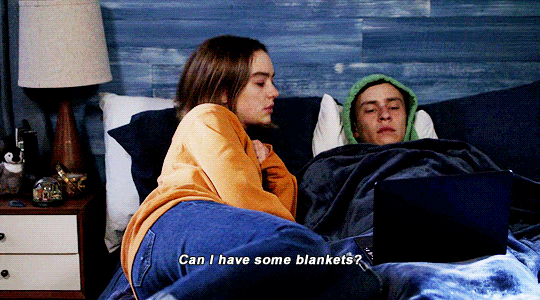

22K notes
·
View notes
Text
Quotes from: Stories of Autism: What the Rise of Books on Autism Tells Us About, Well, Autism
"What is autism?" has been the central question of the autism conversation since the 1940s, when both Leo Kanner and Hans Asperger began to delineate "autism" as an identifiable "thing." The question is as open today as it has ever been. In one way or another, every text dealing with autism addresses it. Or, as Jordynn Jack puts it in the Introduction to Autism and Gender, " 'autism has become a site of controversy and contestation, a scene of rhetorical action, a "rhetorical phenomenon," as Paul Heilker and Melanie Yergeau have noted' " (1).
Although "autism" has existed as a diagnosis for sixty years, its operation – the kinds of stories we tell about autism and the people who have it, the limitations we place on them as a result of the label – are only beginning to be interrogated, evaluated, or complicated. The work of non-autistic authors writing about autism continues to dominate both the academic and the popular discourse, and elements of non-autistic storytelling, such as claims that autistic writers lack "theory of mind" or an "inner world," continue to hamper the ability of a non-autistic audience to attend to autistic constructions of identity. Likely there is no one answer, no "thestory of autism." There are only stories – and most of them are waiting to be written.
All the works in this project consist of representations of autism by non-autistic creators and actors. Unfortunately, I agree with this quote that “the work of non-autistic authors writing about autism continues to dominate both the academic and the popular discourse.” “Aypical,” “The Good Doctor,” and “Please Stand By” all came out within the past year or so, with “Fly Away” trailing not far behind at 2011. These are the stories of autism that are currently dominating popular media (not to mention award shows).
I do think, however, that at the very least the movie “Please Stand By” challenges this popular notion that “autistic writers lack... an ‘inner world.’” Wendy has a clearly established inner world throughout the movie. Not only do we get to see flashes of scenes from her story, but we get to see the development of her story and how she uses it as an outlet not only for her imagination and her own individual spin on another work of fiction, but she also uses it to reflect her experiences in her life. For example, it becomes clear that Wendy is using the character Spock from Star Trek as a symbol for her own life experiences. Not only this, but eventually Wendy’s main caretaker (Scottie) as well as various people Wendy meets during her journey are able to get to know Wendy better once they realize the significance of Spock and the story Wendy is trying to tell.
4 notes
·
View notes
Text
Quote from: Autism, Rhetoric, and Whiteness
Even a cursory examination… reveals a high proportion of scientists and technology experts, which leads us to consider the role geek chic plays in the construction of autistic whiteness. As Steve Silberman wrote in Wired magazine in 2001, "It's a familiar joke in the industry that many of the hardcore programmers […] are residing somewhere in the Asperger's domain," that autism is "the engineers' disorder" (par. 32). Silberman cites a recurring theme in case histories of autism: a "fascination with technology, ordered systems, visual modes of thinking, and subversive creativity" (par. 35). And in our digital world, such interests and skills are increasingly coded as positive traits, while traditional social skills are becoming less important. Hence, as Neil Shepard notes, "in our cultural moment of geek chic […] the proto-typical Aspergian persona represented dominantly in the media is often both intelligent and successful," which also means "masculine, middle/upper class and white" (i).
Shaun and Sam are both very into science and are often celebrated for it. Shaun gets a job because of his scientific prowess and Sam gets a study date that eventually leads to a girlfriend (his goal for the show) because of how well he does in science. In fact, science seems to be the only thing the boys are allowed to do well at considering they seem to regularly make mistakes everywhere else. This puts autistic people in a harmful box that places unfair expectations on us while also punishing those of us who fail to rise up to the “standard” of “autistic science genius.”
Wendy is interested in science fiction and the “white nerd” or “’geek chic’” culture evoked in this section that, while not specifically science in the way that Shaun and Sam engage with it. However, this aside, both Wendy and Mandy challenge this idea of science as the only realm in which autistic people can find an outlet/have skills. Wendy is a writer and Mandy draws and, as such, both girls are allowed more creative outlets and self expressions which pushes back against the stereotype.
2 notes
·
View notes
Text
Quote from: Autism, Rhetoric, and Whiteness
But what all these rhetorical constructions have in common is that they almost inevitably portray autistics as white — no matter whether the person in question is real or fictional, male or female, young or old, a child or parent or sibling, and regardless of his or her occupation, degree of success, or celebrity. There is thus a complex, somewhat contradictory set of effects of these discourses, one that affects both those on the autism spectrum and neurotypicals as well, implicitly but powerfully shaping what we can collectively perceive and conceive about autism and autistics. On the one hand, for instance, this rhetoric suggests that autism is radically democratic, that it is socially unifying, affecting a broad range of people over a variety of typical demographic distinctions, such as gender, age, class, nationality, and religion. On the other hand, this rhetoric suggests that autism is exclusive, that it is socially divisive, affecting only a particular kind of people as determined by the single and especially fraught demographic distinction of race. This vexed dynamic has additional implications for autistics and neurotypicals alike, affecting our assumptions and relationships at every level from the interpersonal to the international.
Considering Shaun, Sam, Wendy, and Mandy are all white, I definitely agree with this analysis. There is a huge gap in representations of disabled POC in media and autism is no exception. This (often unchallenged) practice not only leads to a misunderstanding of autism in general, but specifically makes POC feel unwelcome and unacknowledged in disability circles, creating further barriers to growth as a disabled community and allowing diversity to shape and expand us.
1 note
·
View note
Text
Quote from Representing Autism by Stuart Murray
‘America has Asperger’s’, historian Niall Ferguson wrote in the Daily Telegraph in May 2004, in one of the most explicit examples of this. ‘You may not yet have heard of Asperger’s syndrome’, Ferguson wrote, ‘But you can be sure that someone will sooner or later offer it as an excuse for his own bad behaviour, for it is the height of hypochondriac fashion in New York’.4 (28)
This kind of ableist thought process is very common within all four pieces. At least once (and definitely more than that) in all works autism is used as an excuse for the autistic characters’ behavior and social gaffs, either implicitly or explicitly. However, Ferguson is wrong in that these excuses are not usually made by the disabled people themselves, but by the people in their lives who don’t understand them. Sure, autism is sometimes used as an explanation by the actually autistic person. Normally in a way that explains to others why they might need to interact a certain way, why they find a certain thing important, why they do or don’t want to do something. It is the other people who use autism as an excuse to dismiss an autistic person’s words or actions (and as a tool for blame).
0 notes
Note
While I agree with these sentiments, I think it’s important to remember the history of mother blaming, especially within disability circles, that exists and how shows like “Atypical” use this history to further their plot. I think the unsympathetic portrayal of Sam’s mother Elsa is definitely rooted in misogyny (not to mention that she and her daughter are given more responsibility for Sam’s well-being than his father is in the show and it’s made clear that he’s had even less in the past before the show’s timeline starts).
atypical was terrible...i can't believe how many puzzle piece there were everywhere and how much they made the parents whine about how sam was never going to be normal and he ruined their lives bc he was autistic??? i think his sister would have suited being centred as the autistic one tbh
The parents were so uggggh ! Especially the mom, 0/10 horrible storyline.
But I would have much rather have watched a show about his sister (or even his girlfriend) getting diagnosed, yeah !
- Sister Cat
24 notes
·
View notes
Text
You know how the entire Autistic community is getting increasingly frustrated by our representation in the media, and how we’re all asking for better representation? Well, I’m doing something shocking. I’m channelling my special interest, musical theatre, and writing a show about, wait for it, a girl with Aspergers with a single dad and an arts based special interest, with the working title “Spectrum”. It’ll take years to write, as many shows do, but I’m letting the community know now that one of us is trying to change things. I’m promising you now, I will do my best to portray us. I’m one of you and we deserve our stories to be told. I’m just doing it the only way how. Hopefully that makes up for some of the abominations we’ve seen in film and TV.
2K notes
·
View notes
Link
18 notes
·
View notes
Photo
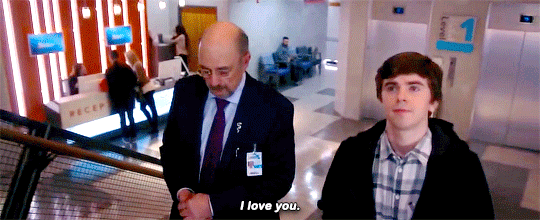
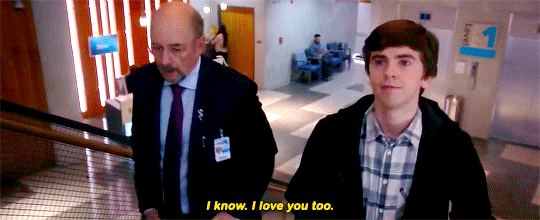
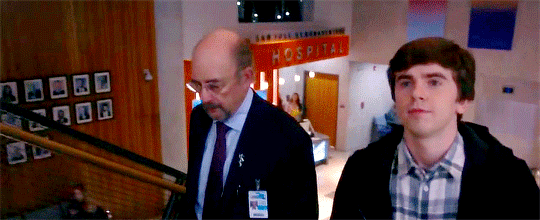
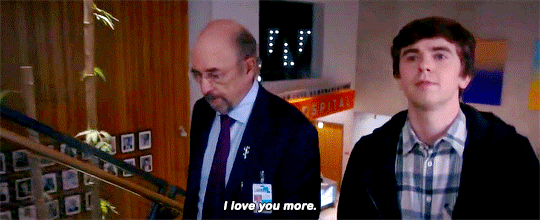
8K notes
·
View notes
Photo
Shaun’s and Dr. Glassman’s relationship is one of the most dynamic and complicated relationships in the show. They go way back, all the way to Shaun’s teen years, and they clearly have a deep bond. However, they struggle with the new dynamic in their relationship that is caused by Shaun’s job in the hospital that Glassman runs and, though I often don’t like the way Shaun is treated, I appreciate the chance he is given to develop his personal relationships and to establish his independence.




#I love the conclusion they came to
3K notes
·
View notes
Photo
While this scene was incredibly upsetting, I think it brought to the attention of viewers who may not have noticed it before that Glassman was crossing some serious boundaries in Shaun’s life. I don’t like that it took the escalation of a meltdown on Shaun’s behalf because disabled people shouldn’t be forced into these kinds of physically and emotionally draining situations in order to make a point. However, I think this scene was important in allowing Shaun to reestablish boundaries between him and Glassman and to call to Shaun’s attention that he really needed some time away from the draining people and places in his life in order to stay healthy and happy.










You cannot keep ordering me around, okay? You’re not my father. I know that, Shaun
2K notes
·
View notes
Photo
I can’t help but draw parallels between this scene of “The Good Doctor” and a scene discussed earlier in the project in “Atypical,” when Sam struggles with the social cues and rules of flirting. I think it’s interesting to watch how different shows handle the same subject, but it’s also frustrating that, the more often this subject pops up, the more obvious it is that the perception that autistic people can’t flirt is just another common stereotype. Not to mention that this portrayal in media adds on to the already present desexualization of disabled people.










So, how’s it going with Lea? She doesn’t like me. Why do you say that? She said I was an asshat. Yeah? What was she doing when she said that? Touching me. She was flirting with you. Sometimes people say the opposite of what they mean. They use teasing as a way of saying something they don’t mean, instead of saying something that they do.
2K notes
·
View notes
Photo
I like that Shaun is allowed to call out the ableism and other bad behavior that he encounters instead of being forced to be a passive victim, there for someone else to save if they deem him worthy enough. Further, Shaun is never demonized for his self-defense and, in fact, gains some respect for it from his colleagues and bosses. It’s refreshing, especially considering some of the other characters that I discuss in this project are typically not allowed to stand up for themselves. Take Sam in “Atypical,” for instance. His sister or his mother (but especially his sister) are usually the ones to fight Sam’s battles for him. Don’t get me wrong, I’m all here for community support and powerful female figures, but I wish it wasn’t at the expense of disabled people’s rights to stand up for ourselves.





547 notes
·
View notes
Text
Okay, can we just pause a moment and watch Shaun “catastrophize” the car accident after Lea let him try driving? This is a real autism nuance that I have NEVER seen portrayed, but it’s one I think almost all autistic people can relate to.
Lea was teaching Shaun how to make the car peel out (burn rubber) and wasn’t specific enough about telling him to take his foot of the gas before taking it off the brakes. So he took his foot off the brake first, drove the car off the road and I think the axle or a tire got messed up because he ran over a big rock.
youtube
https://www.youtube.com/watch?v=wnKZo5Kryws
Lea didn’t react the way Shaun expected. She took the blame for the accident and had to calm him down because he was making a big deal out of it. But why is Shaun reacting this way to something Lea considers minor?
Answer: Autistic people are never allowed to fail the way neurotypicals are.
Neurotypicals are given a shot at something, and if they mess up they get to laugh about it / get a little embarrassed and try again.
Autistic people are given a shot at something, and if we mess up we get lectured / yelled at, the opportunity is taken away from us and we’re told “obviously you can’t do it, so why bother trying again?”
We are kept on a really short leash by the authority figures in our lives. This is especially true of autistic people such as myself who can’t live independently and need some or a lot of help every day. We’re expected to defer to caregivers as authority figures as if we’re not capable of deciding anything for ourselves or being an authority in our own lives without a “go ahead” from someone else. Some of us might need someone else to help us do the thing after we make our decision.
The reactions caregivers give to our decisions may cause us to decide the opposite of what we actually want so we don’t inconvenience them and cause a conflict– and that can feel like not having a real choice at all.
“I want thing A, but they always get mad when I want thing A, so I’ll say I want thing B instead because less social pressure.”
I’ll give a simple scenario to express what I’m talking about here. Assume the autistic person needs assistance getting dressed, and how they express what they’re saying (speech or AAC) is up to your imagination.
One day:
Autistic person: “I want to wear my red hoodie today.” Caregiver: “I haven’t sorted the laundry yet. I’m tired. Why don’t you wear the blue sweatshirt instead?” Autistic person: *Hesitant* Caregiver: *Sighs and looks annoyed* Autistic person: *Stomach gets a tight feeling; this is social pressure. Pushing against social pressure causes conflict. Conflict is painful.* Autistic person: *Conflict discomfort is unbearable, seeks to end it the quickest way possible.* Autistic person: Fine…I’ll wear the blue sweatshirt. Autistic person: *Feels defeated, like their choices don’t matter.*
Another day:
Autistic person: *Wants to wear their red hoodie.* Autistic person: *Remembers the caregiver’s response about the hoodie last time* Autistic person: *Stomach gets tight again.* Autistic person: I’ll wear my blue sweatshirt today. Caregiver: *Looks relieved.* Caregiver: Okay, let’s get you dressed. Autistic person: *Stomach tightness goes away, but they feel defeated like their choices don’t matter.*
And what about nonverbal autistic people who need lots of daily help and can’t make their communications understood? Many of their meltdowns may be sensory, but I can betcha all the money in every bank on Earth that some of their meltdowns are from feeling like they have no say or control in their own lives. Every decision is made for them, they’re maneuvered through their day, get tugged on if they resist and then they act out explosively (ie aggression, bolting, vocalizing) because that’s the only choice they get to make that is entirely their own.
I think caregivers should present them with choices during the day, even if it’s as simple as what color shirt they wear or if they want oatmeal or a muffin for breakfast. Let them have some say in their lives. They might look at or touch the thing they want if you offer both and say they get too choose.
And hey, if it won’t hurt anything if they act like they want both, let them have both! Who cares if wearing two shirts that don’t go together looks a little silly? Who cares if they want a muffin with their oatmeal? They’re making their own choice. You can still steer them away from choices that would be dangerous while still giving them choices.
Like, don’t present them with any winter clothes in summer, and don’t offer food choices with foods that upset their stomach.
But let them have a chance to choose.
And let them have a chance to try, fail and try again.
Shaun was yelling “I want to make my own decisions!” when he had a meltdown. I wonder how many autistic people who can’t understandably express that thought are having meltdowns for the same reason.
Society teaches autistic people that we should do everything possible to not inconvenience our caregivers, but the cost of that is we feel little to no control over our lives.
The worst failure is not trying.
Let us try.
2K notes
·
View notes